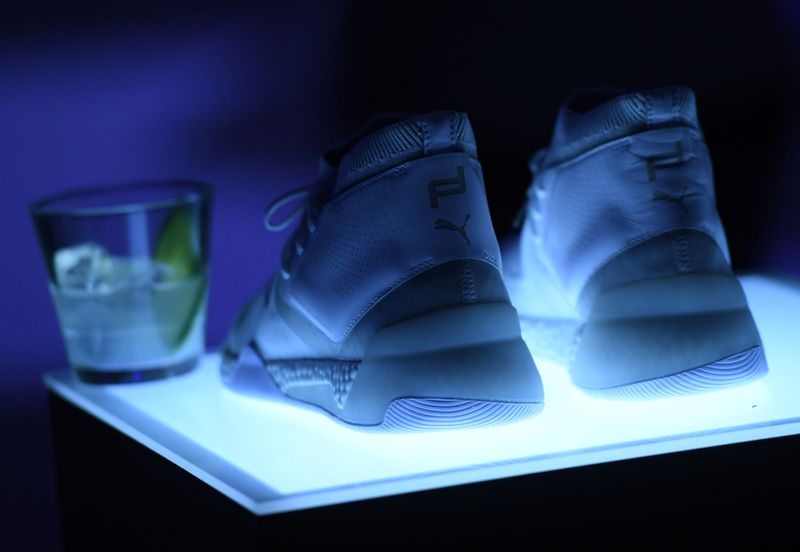
By Helen Reid
(Reuters) -Puma lost more than a fifth of its market value on Thursday after the German sportswear brand reported lower than expected fourth-quarter sales and a drop in annual profit, raising questions about its ability to compete with bigger rivals Adidas and Nike.
The poor results late on Wednesday came after Adidas reported strong sales and profitability, highlighting the work Puma still faces to boost its brand and take a bigger slice of the $400 billion global sportswear market.
Puma shares ended the day down 22.8% at 32.3 euros, their worst day ever and hitting their lowest level since February 2018.
Puma has been relaunching shoes such as the 1999 motor racing-inspired “Speedcat” as it tries to muscle into a market dominated by Adidas’ retro Samba soccer sneakers, but JPMorgan analysts said sales trends for the Speedcat have been weaker than expected so far.
Newer, fast-growing brands such as On Running and Hoka have shaken up the sportswear industry, eroding the dominance of Nike, which has seen slowing sales, and creating more competition for shelf space at top sporting goods retailers.
“This will make investors question what the competitive advantage of Puma is,” said Deutsche Bank Research analyst Adam Cochrane.
“If Puma is not really taking market share, at a time when its biggest competitor (Nike) is weak, is the customer not accepting the brand premiumisation it is trying to put through?”
Puma has increased spending on marketing to boost its brand perception, and the Speedcat is priced at 109.95 euros ($114.44) on its website, on par with Adidas’ Samba – whereas Puma shoes have traditionally been cheaper than Adidas and Nike.
Puma has said it aims to sell between 4 million and 6 million pairs of the Speedcat in 2025.
Puma’s fourth-quarter sales rose 9.8% in currency-adjusted terms, below the 12% growth expected by analysts. Net profit last year fell to 282 million euros ($293 million) from 305 million, in part due to higher interest payments on its debt.
The company did not explain what led to its weaker than expected sales. CEO Arne Freundt had said in November he was confident about demand heading into the year-end shopping season.
The strength of the U.S. dollar poses a problem for Puma, which pays its Asian suppliers in dollars but makes a big share of revenues in euros.
On the back of the weak profit, Puma launched a cost-cutting programme aiming to reach an earnings before interest and tax (EBIT) margin of 8.5% by 2027, up from 7.1% in 2024.
“While we achieved solid sales growth in 2024 and made meaningful progress on our strategic initiatives, we are not satisfied with our profitability,” Freundt said in a statement.
